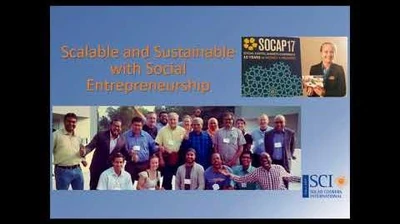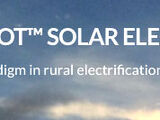Paul Hedrick (talk | contribs) mNo edit summary Tag: Source edit |
Paul Hedrick (talk | contribs) m (→See also) Tag: Source edit |
||
| Line 109: | Line 109: | ||
==See also== |
==See also== |
||
| − | *[[Pete Schwartz|Pete Schwartz, Cal Poly researcher, solar electric cooking]] |
+ | *{{NewOct20}} [[Pete Schwartz|Pete Schwartz, Cal Poly researcher, solar electric cooking]] |
* [[Heat storage]] |
* [[Heat storage]] |
||
* [[:Category:Hybrid solar cooker designs|Hybrid solar cooker designs]] |
* [[:Category:Hybrid solar cooker designs|Hybrid solar cooker designs]] |
||
Revision as of 19:15, 8 October 2020
|
Last edited: 8 October 2020
|
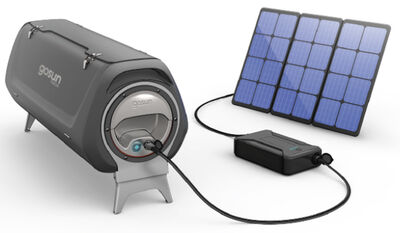
GoSun Fusion Solar Kitchen, Photo credit: The Spoon
Photovoltaic cooking designs offer another approach to harvesting the sun to cook food. Instead of solely relying on the sun's direct radiation to cook, these systems use photovoltaic cells to provide power to an electric induction cooktop, resistance heating elements, or providing direct thermal cooking with a simplified system incorporating an array of diodes.
Although the induction heating elements use relatively little electricity, their efficiency is greatly increased when combined with a well insulated solar thermal cooker, more so than any resistance based electrical heating sources.
Evacuated tube solar cooker designs provide a platform well suited to this hybrid approach. With the availability of an chargeable battery or phase-change thermal storage, this type of cooker makes cooking after sunset or in the early morning possible.
News
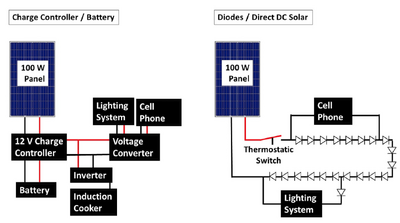
Comparative simplicity of a diode vs an induction cooking system, ScienceDirect.com. Vol 4, 2019
- March 2020: Research begins using thermal diode arrays for cooking - Cooking powered by photovoltaic panels appears to be developing rapidly. Early research involved cooking directly with induction heating elements. However the direct thermal output was low temperature, and researchers concluded induction systems worked more efficiently when included with battery storage, or a phase-change medium. The phase-change medium would be heated throughout the day, and be able to give back the heat at a higher rate to the induction element for cooking later in the day (See August 2019 news item). Recent development with incorporating thermal diodes arrays shows the possibility of using a simpler and less expensive system to generate heat for cooking. They do not require 12v charge controllers, voltage converter, batteries, and inverters of traditional PV systems, but they do not intrinsically have energy storage capabilities. They require a thermostatic switch to interrupt the circuit above a predetermined temperature. This research is in its infancy, and more detailed information can be found in: Hot diodes!: Dirt cheap cooking and electricity for the global poor? - Volume 4, 2019, 100044 ScienceDirect (See also the May 2020 video below produced by Pete Schwartz and his team cooking with this method in Ghana.)
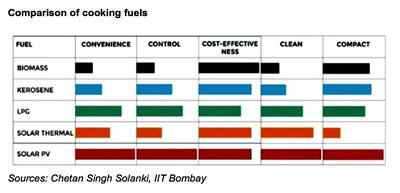
- November 2019: Electric cooking starts to simmer in rural India - Following the success of the Saubhagya initiative and its announcement of 100 per cent rural household electrification, efficiency gains and cost reductions in solar panels and batteries are opening up a new market that has the potential to avoid using any solid or fossil fuel, with solar-powered electric cooking or e-cooking using pressure and rice cookers and induction stoves gaining traction. The winner of the 2017 challenge, IIT Bombay, has since conducted a project to convert the entire village of Bancha in Madhya Pradesh, India to solar panels and induction cookstoves instead of wood-burning or LPG stoves. With Rs 8.5 million provided by ONGC, all the 75 houses in Bancha now rely on solar-powered electric stoves to meet their cooking needs. Besides reducing air pollution, villagers no longer have to collect firewood from nearby forests, saving time and effort. More information...
- August 2019: Cooking with PV and phase change materials in place of a battery - Pete Schwartz explains how his research group at Cal Poly, USA is using a relatively low power photovoltaic panel to produce electricity to run an induction heating element, which runs through a phase changing heat storage medium. The medium melts at 120 °C (248 °F) during exposure throughout the day. In the evening the medium is hot enough to cook a meal fairly quickly without the sun, stored battery power, or further input from the induction heating element.
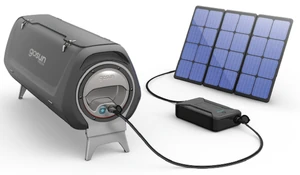
GoSun Fusion Solar Kitchen, Photo credit: The Spoon
- January 2019: The 2019 GoSun Fusion revealed at CES 2019 - c|net
- December 2018: IIT-B fest launches solar chai on day 1 - The Asian Age
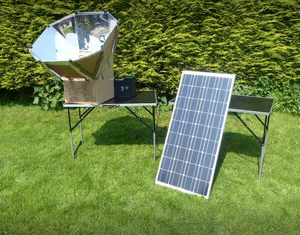
A 100w photovoltaic panels provides additional cooking power with a heating pad located inside of the adjacent solar box cooker. Photo credit: Seggy T Segaran
- June 2018: PV supplements solar cooking - Seggy T Segaran has experimented with adding more cooking power to a solar box cooker, provided by a heating pad located inside the cooker. It is powered by the nearby 100w photovoltaic panel. He reports the heating pad on its own put around 35 watts of power into the solar cooker. When placed in the sun, the cooker ran at around 70 watts of combined solar and electric power. See also: Dr. Alan Bigelow, SCI Science Director, discusses his experiences with hybrid solar and electric induction cooking from 14:45-20:30 of this video
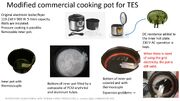
Using a modified commercial electric cooker with erythritol as a storage medium
- March 2016: Antonia Lecouna Neumann reports: "We use erythritol as heat storage material, cheap, durable, edible and has a melting heat similar to ice. We found it superior to other alternatives although long term durability is still an issue." Read more...
Documents
- 2019: Hot diodes!: Dirt cheap cooking and electricity for the global poor? - Volume 4, 2019, 100044 ScienceDirect
- 2019: Insulated Solar Electric Cooker (ISEC) Immersion Heater - Mechanical Engineering Department Cal. Poly State University
- July 2019: Powering Jobs Census 2019: The Energy Access Workforce - Power for All
- June 2019: Beyond Fire: How to achieve electric cooking - Hivos & World Future Council
- January 2018: DryEcoMate – An Horticultural Dehydrator, Using Solar Thermal and Photovoltaic Energy, Low Cost Production, Modular and Portable (Slides, Paper) - J. Garcia, et al
- January 2018: Photovoltaic Solar Cooking with Thermal Energy Storage (TES) (Slides, Paper) - Antonio Lecuona-Neumann, et al
- January 2017: Insulated Solar Electric Cooking – Tomorrow's healthy affordable stoves?
- November 2017: Compact photovoltaic 12v induction cooker prototype - Puttaraj & Ashok Kundapur
- March 2017: Solar Powered Induction Cooking System - Sibiya & Venugopal
- January 2017: All Time Operating Solar Cookers for Indoor and Outdoor Cooking - Smita B. Joshi and A. R. Jani
- January 2015: Preliminary design and analysis of a proposed solar and battery electric cooking concept: costs and pricing - Leach, M., Oduro, R.
Articles in the media
- July 2020: Kroger in new solar deployment - CSA
- June 2020: Clean Cooking: 33 Solutions For One Renewable Energy Problem - CleanTechnica
- February 2020: Single Portable Induction Cooktop: What They Won’t Tell You About an Induction Burner The Equipped Cook
- November 2019: Can electricity be an option for clean cooking in developing countries? - Orfonline
- October 2019: Electric cooking starts to simmer in rural India - Energyworld.com
- October 2019: SECI tenders 500 quantities of solar cooking systems - PV Magazine India
- June 2019: Kenya launches US $461m off grid solar solutions - Construction Review Online
- June 2019: Bancha, the first solar kitchen only village in India - Business Standard
- April 2019: Bridging the last mile: Accelerating access to cooking energy in India - Opinion by Amit Kumar | ET EnergyWorld - Energyworld
- December 2018: IIT-B fest launches solar chai on day 1 - The Asian Age
- August 2018: After Saubhagya, govt plans induction stoves for the poor - Live Mint
- July 2018: Dawn of Solar PV Cooking - Akshay Urja, Issue 6
- July 2018: Centre plans to introduce solar cooking facilities for every rural household in next 4-5 years, says Piyush Goyal - Mumbai Mirror
- May 2018: Photovoltaic cooking makes sense - IDTechEx
- April 2018: IIT-B sends cooking for a SIX - The Asian Age
- April 2018: IIMK LIVE hosts Live Demo of Solar Cooking Innovation - India EducationDiary.com
- November 2017: Green Energy Research Centre, IUB update - The Daily Star (Combined with photovoltaic farming innovations, GERC mentions developing their photovoltaic powered cooker to meet the needs of a family for regular cooking purposes.)
- November 2015: Benin tackles climate change with sunshine and coconuts - Pakistan Ki Awaz
- December 2016: Energiebilanz von Solarzellen - Energie Weblog (English version)
Audio and video
- May 2020:
Solar Electric Cooking in Ghana With Phase Change Thermal Storage, Pete Schwartz, Cal Poly Physics-0
August, 2019, Pete Schwartz and his team spent 3 weeks in Ghana. They made Solar Electric Cookers with Phase Change Thermal Storage with our newly made friends and colleagues, introducing this cooking method in a small village without electricity. Erythritol, with a melting point of 120 °C (248 °F), was used as the heat storage medium. - Cal Poly Solar Cooking
- June 2019:
- January 2019:
- December 2018:
- October 2018:
- August 2018: 239 SunPod-Interview: Seggy Segaran – solar/electric hybrid cooker (First minute in German, interview in English)

Seggy Segaran solar cooker-PV hybrid Photo credit: Michael Bonke
- June 2018:
SolaCooka
The SolaCooka stores energy in the ground in a phase change material. The concept has been tested with success, and now there is an effort to get it to mass production in India and similar countries where self-install kits are to be distributed, some for a price and some for free. Quotes have been obtained for 80W PV solar panels, which can be built for USD 10, making this practical and affordable. There is a plan to employ people living in the slums to put together the kits for people to install.
- April 2018:
- Pete Schwartz of Cal Poly Solar Cooking: Photovoltaic Solar Cooking - How Far in the Future?
Schwartz Photovoltaic Solar Cooking-0
Electric cooking is convenient and widely adopted globally, while photovoltaic cells are ideal for small-scale electricity generation in many areas. Assuming the continuing decrease in photovoltaic prices, when might we expect PV solar cooking systems to be cost competitive?
External links
See also
References
Template:CategoryLinksTest
All items (8)





